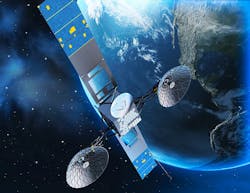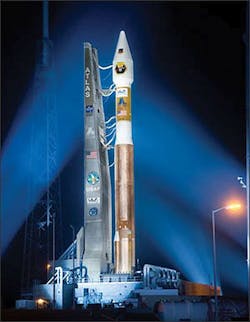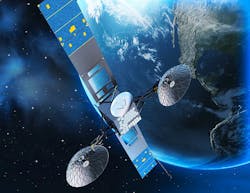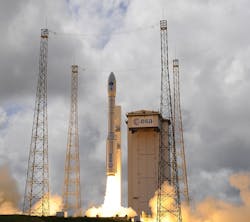COTS in space: hasty generalizations
By Dan Friedlander
Retired following 44 years in component engineering
Multiple articles I have authored on commercial off-the-shelf components in space applications have been met with more and more indications of fallacious, unpersuasive arguments. Some of the arguments are rooted in multi-year convictions, others are rooted in misunderstanding and/or misinterpretation of ambiguous, confusing, on-going official mixed MIL/COTS space policy.
In this article, I go back to the basics to clarify some points to be considered in reasoning. The issue is a complex one, involving a lot of hidden (not accessible) information needed to understand the whole issue fully. Saying that, I do not exclude myself from those confused by the ambiguous and/or unrealistic rules to be followed. That may lead me to misunderstandings. In such cases, I welcome adequate feedback.Although the acronym "COTS" is extensively used for decades, it is worth clarifying its meaning and its scope within the context of Electrical, Electronic, and Electromechanical (EEE) component use in space applications.
The meaning variants of the acronym COTS at component or non-developmental item levels may be:
- Commercial off-the-shelf (COTS) - most popular, in military equipment.
- Commercially available off-the-shelf (COTS) -- as defined by Federal Acquisition Regulations System, FAR 2.101.
That leaves the MIL/COTS debaters with free interpretation opportunities to defend their positions. The COTS party claims that "commercial" means "not military" grade EEE components, commercially available. The MIL/QML party claims that "commercially available" refers to availability and not to grade. Consequently, "QML is also a COTS solution.” Hopefully, both parties agree that "off-the-shelf" means use as is, although some still think that it means "from inventory."
I consider the following definition the most comprehensive one:
Reference NASA/TM-2014-218261
NASA Engineering & Safety Center (NESC)
"COTS: An assembly or part designed for commercial applications for which the item manufacturer or vendor solely establishes and controls the specifications for performance, configuration, and reliability (including design, materials, processes, and testing) without additional requirements imposed by users and external organizations. For example, this would include any type of assembly or part from a catalog without any additional parts-level testing after delivery of the part from the manufacturer."
According to the above definition, it is clear that QML is not a COTS solution. It is also clear that COTS is something to be used as is, without any post-procurement, part-level testing.
I find this explanation acceptable; however, I question the compatibility of NASA’s attitude toward the use of Plastic Encapsulated Microcircuits (PEMs). PEM, definitely considered COTS, in space and the above statement of no post-procurement, part-level testing (refer to NASA PEM-INST-001 for heavy post-procurement testing requirements).
After the above attempt to understand the open-to-interpretation meaning of COTS, let us consider its scope within the context of EEE components use in space applications.
Commercial off-the-shelf may refer to EEE components that are ready-made and available for sale to the general public. This leads to a huge EEE Components population, including all the commercial grade ones (industrial, commercial, consumers, automotive etc.).
The relevant candidates for use in space applications are selected from a subgroup of the term COTS, meeting as minimum the industrial temperature range -40°C to +85°C. The subgroup also includes PEMs.
Often, people issue irresponsible statements about usage unsuitability of COTS in space. Using the acronym COTS in such general statements may be interpreted as "all COTS are not suitable for use in space." This is definitely not true. There is no room, especially in the post 1994 Perry memo dealing with acquisition reform, for hasty generalization. Hasty generalization is an informal fallacy of faulty generalization by reaching an inductive generalization based on insufficient evidence, essentially making a rushed conclusion without considering all the variables. The above statements are not acceptable.
"All generalizations are false, including this one." -- Mark Twain
The go-to resource for Intelligent Aerospace technology news & information:
Covering key topics
Across all market segments
Subscribe to the free Intelligent Inbox e-newsletter
Subscribe to receive all the latest aerospace technology news & information, delivered directly to your e-mail inbox twice a week (Tuesdays and Thursdays). Sign up for your free subscription to the Intelligent Inbox e-newsletter at http://www.intelligent-aerospace.com/subscribe.html.
Connect on social media
Keep pace with aerospace innovation and opportunities via your favorite social media channels. Connect with Intelligent Aerospace on Twitter (@IntelligentAero), LinkedIn, Google+, and Instagram.
The go-to resource for Intelligent Aerospace technology news & information:
Covering key topics
Across all market segments
Subscribe to the free Intelligent Inbox e-newsletter
Subscribe to receive all the latest aerospace technology news & information, delivered directly to your e-mail inbox twice a week (Tuesdays and Thursdays). Sign up for your free subscription to the Intelligent Inbox e-newsletter at http://www.intelligent-aerospace.com/subscribe.html.
Connect on social media
Keep pace with aerospace innovation and opportunities via your favorite social media channels. Connect with Intelligent Aerospace on Twitter (@IntelligentAero), LinkedIn, Google+, and Instagram.
The go-to resource for Intelligent Aerospace technology news & information:
Covering key topics
Across all market segments
Subscribe to the free Intelligent Inbox e-newsletter
Subscribe to receive all the latest aerospace technology news & information, delivered directly to your e-mail inbox twice a week (Tuesdays and Thursdays). Sign upfor your free subscription to the Intelligent Inbox e-newsletter at http://www.intelligent-aerospace.com/subscribe.html.
Connect on social media
Keep pace with aerospace innovation and opportunities via your favorite social media channels. Connect with Intelligent Aerospace on Twitter (@IntelligentAero), LinkedIn,Google+, and Instagram.




